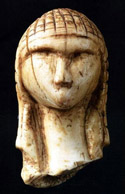Anthropology, Department of
Document Type
Article
Date of this Version
Winter 1-7-2014
Citation
Published in American Journal of Physical Anthropology 153:1 (January 2014), pp. 1–8; doi: 10.1002/ajpa.22408
Abstract
The ancestral state of human skin pigmentation evolved in response to high ultraviolet radiation (UVR) stress. Some argue that pigmentation evolved to limit folate photolysis, therein limiting neural tube defects. Pigmentation also protects against sunburn which decreases the efficiency of sweating and potentiates skin infection. Pigmentation increases the efficacy of skin as a barrier to infection. Skin cancer has been rejected or minimized as a selective pressure because it is believed to have little or no effect on mortality during reproductive years. This argument ignores evidence of human longevity as a derived life history trait and the adaptive value of investment in offspring and kin, particularly during the post-reproductive lifespan. Opponents argue that lifespan in prehistoric hunter-gatherers was too short to be relevant to the evolution of skin pigmentation. This argument is flawed in that it relies on estimates of longevity at birth rather than adolescence. When appropriate estimates are used, it is clear that human longevity has a deep evolutionary history. We use a life history perspective to demonstrate the value of skin pigmentation as an adaptation to skin cancer with the following points: UVR exposure increases dysregulation of gene expression in skin cells leading to immortal cell lines; cutaneous malignant melanoma (CMM) affects individuals throughout reproductive years; and lifespan was longer than has previously been acknowledged, providing the opportunity for kin selection. This hypothesis is not at odds with the folate or barrier hypotheses. We stress that the evolution of skin pigmentation is complex and is an ongoing process.



Comments
Copyright © 2013 Wiley Periodicals, Inc. Used by permission.